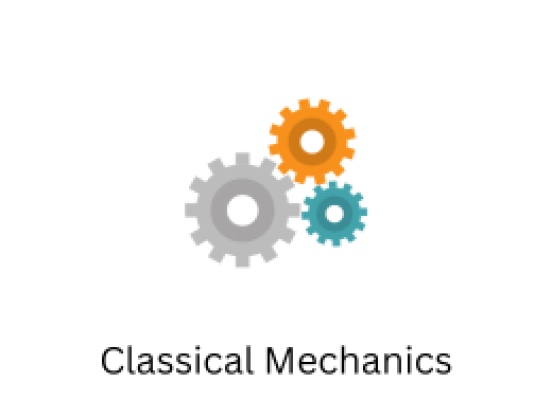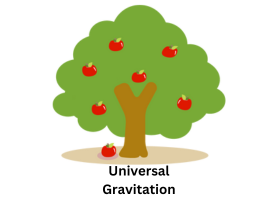
Classical Mechanics
- By admin --
- Thursday, 28 Sep, 2023
Classical Mechanics: The Foundation of Physical Science
Classical mechanics is the branch of physics that deals with the motion of objects and the forces that act upon them. It is a fundamental part of the physical sciences and serves as the foundation upon which much of modern physics is built. Developed over centuries, classical mechanics provides a framework for understanding how the world around us behaves in terms of motion, energy, and momentum.
Historical Development
Classical mechanics has a rich history that can be traced back to the works of ancient Greek philosophers such as Aristotle and Archimedes. However, it was in the 17th century that the foundations of classical mechanics were truly laid. Sir Isaac Newton, an English mathematician and physicist, is often credited with formulating the three laws of motion that are central to classical mechanics.
Newton's Laws of Motion
Newton's first law of motion states that an object at rest will remain at rest, and an object in motion will remain in motion unless acted upon by an external force. This principle is often summarized as "an object in motion stays in motion, and an object at rest stays at rest unless acted upon by a net external force." In other words, objects tend to maintain their state of motion unless something causes a change.
The second law of motion relates the force applied to an object to its mass and acceleration. It is often expressed as F = ma, where F represents the force applied to an object, m is its mass, and a is the resulting acceleration. This law quantifies the relationship between force and the resulting motion of an object.
Newton's third law of motion states that for every action, there is an equal and opposite reaction. This law emphasizes the idea that when one object exerts a force on another, the second object exerts an equal force in the opposite direction. This is the law that underlies the operation of many everyday devices, such as rockets.
Applications of Classical Mechanics
Classical mechanics has a wide range of applications, from explaining the motion of everyday objects to predicting the behavior of celestial bodies in the universe. Here are a few key areas where classical mechanics is applied:
-
Projectile Motion: Classical mechanics can predict the trajectory of objects such as projectiles, including the motion of a baseball thrown by a pitcher or the path of a cannonball fired from a cannon.
-
Orbital Mechanics: Classical mechanics is used to describe the motion of planets, moons, and satellites in our solar system. It enables astronomers and engineers to calculate orbits and plan missions to other celestial bodies.
-
Mechanics of Machines: Engineers use classical mechanics to design and analyze the performance of machines, from simple levers and pulleys to complex engines and vehicles.
-
Astronomy: Classical mechanics provides the foundation for understanding the motion of stars, planets, and galaxies. It allows astronomers to predict celestial events such as solar and lunar eclipses.
-
Fluid Mechanics: Classical fluid mechanics, a subset of classical mechanics, studies the behavior of liquids and gases. It is crucial in understanding the dynamics of fluids in engineering applications, such as aerodynamics and hydrodynamics.
-
Elasticity: Classical mechanics also deals with the deformation of materials under the influence of forces, known as elasticity. This is essential in engineering and materials science.
Conservation Laws
One of the key principles in classical mechanics is the conservation of momentum and energy. These principles help explain and predict the behavior of objects in motion.
Conservation of Momentum: The law of conservation of momentum states that the total momentum of an isolated system remains constant unless acted upon by an external force. Momentum is the product of an object's mass and velocity, and it is a vector quantity. This principle is crucial in understanding collisions and the transfer of momentum in various physical situations.
Conservation of Energy: The law of conservation of energy asserts that the total energy in an isolated system remains constant over time. Energy can exist in various forms, including kinetic energy (associated with motion) and potential energy (associated with position). Classical mechanics allows for the conversion of energy between these forms, as seen in pendulum swings, roller coasters, and other mechanical systems.
Hamiltonian Mechanics and Lagrangian Mechanics
While Newton's laws of motion provide a powerful framework for solving many classical mechanics problems, more advanced formulations of classical mechanics have been developed. Two notable approaches are Hamiltonian mechanics and Lagrangian mechanics.
Lagrangian Mechanics: Lagrangian mechanics, developed by Joseph-Louis Lagrange, provides an alternative approach to solving mechanical problems. It uses a mathematical quantity called the Lagrangian, which is based on the difference between kinetic and potential energy. The principle of least action, associated with Lagrangian mechanics, simplifies the equations of motion for complex systems.
Hamiltonian Mechanics: Hamiltonian mechanics, developed by William Rowan Hamilton, is another formalism used to describe classical mechanics. It introduces the concept of a Hamiltonian function, which summarizes the energy of a system. Hamiltonian mechanics is particularly useful in quantum mechanics, where it serves as the foundation for the mathematical framework.
Limitations of Classical Mechanics
While classical mechanics is incredibly successful at describing the motion of everyday objects and celestial bodies, it has limitations. It breaks down when dealing with extremely high speeds (near the speed of light) and very small scales (atomic and subatomic particles). In such cases, Einstein's theory of special relativity and quantum mechanics become more appropriate frameworks.
Conclusion
In conclusion, classical mechanics is a fundamental branch of physics that provides a comprehensive framework for understanding the motion of objects and the forces that govern their behavior. It is a cornerstone of the physical sciences and has a wide range of practical applications in engineering, astronomy, and many other fields. While classical mechanics serves as an excellent description of the macroscopic world, it is important to recognize its limitations and the need for more advanced theories in certain situations.





